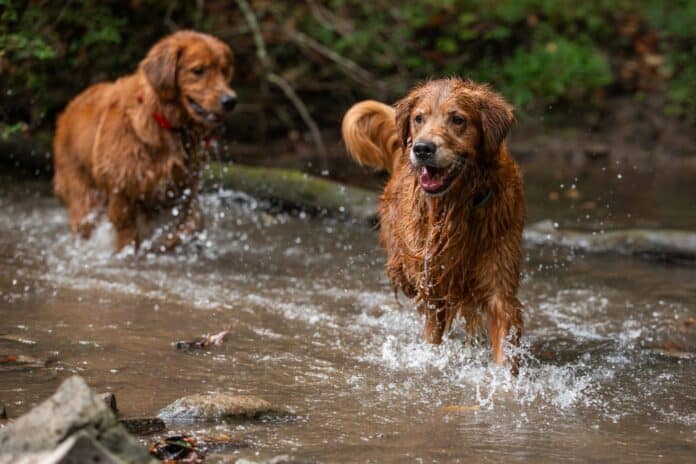As people and their pets seek relief from the heat in lakes and ponds, a Virginia Tech veterinary expert warns of a hidden danger lurking in the water.
“Toxic cyanobacteria, commonly known as blue-green algae, can be fatal to pets within minutes of exposure,” said Alexandra Reddy with the Virginia-Maryland College of Veterinary Medicine. “It’s a concern for animals because the toxins produced by the bacteria particularly target the liver and nervous system.”
Reddy explained that these harmful algal blooms can be deceiving because they can look like simple pond scum or spilled paint on the surface and they thrive in warm, stagnant water.
“Ultimately, even just a few mouthfuls of contaminated water can be fatal to your pet,” she warned.
Reddy offered the following advice for pet owners:
- Know what to look for. “Keep an eye out for the thick scum or foam on the surface of stagnant water to have a blue-green, red, or brown appearance. The water may also have an odor of rotting plants.”
- When in doubt, stay out. “You can’t tell if a bloom is toxic just by looking at it so it’s best to assume that all algal blooms are toxic to your pet, and don’t let them near it.”
- Recognize the signs of poisoning. “Symptoms can appear within minutes to hours of exposure and include vomiting, diarrhea, weakness, excessive drooling, seizures, muscle tremors, and difficulty breathing. In severe cases, the only sign is sudden death.”
- Act immediately. “Do not wait for clinical signs to develop,” Reddy said. “If you think your pet has been in contaminated water, bathe them immediately with clean water to prevent them from licking toxins off their fur and seek immediate veterinary attention.”
- Check for advisories. “Before visiting lakes or ponds, check for local warnings. In Virginia, the Virginia Department of Health maintains a Harmful Algal Bloom Dashboard with updated information.”
About Reddy
Alexandra Reddy is a veterinarian and second-year resident of anatomic pathology at the Virginia-Maryland College of Veterinary Medicine from which she graduated as the valedictorian of the Class of 2024. A Halifax, Virginia, native, her research interests include One Health, infectious disease, zoological/aquatic pathology, and diagnostic pathology. Reddy completed pathology externships at the Bronx Zoo, New York Aquarium, the Zoological Pathology Program at the Brookfield Zoo Chicago, and the nearby Hill City AquaZoo. She also completed previous pathology rotations with Stanford University, Johns Hopkins University, and the Virginia Department of Agriculture and Consumer Services.
By Marjorielee Christianson


